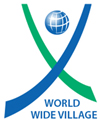
By Kim Anderson
On the final day of our medical team in Haiti last week we headed out to Williamson for a women & children’s mobile medical clinic. Little did we know what an amazing day this would be! On our way we received a call from Peter Seraphin – WWV staff in Williamson – that there was a woman who had been laboring overnight and was waiting for us in the clinic. All at once the excitement grew as we thought about delivering a baby in Haiti!
That excitement quickly was mixed with anxiety as we realized that we would have none of the equipment available to us in the U.S. to ensure a healthy delivery – no ability to monitor the baby, no medications to alleviate the pain and no NICU. We did come equipped with a competent medical team, sterile gloves, sterile instruments for cutting the cord, a bulb syringe for suctioning the baby and a vehicle to get to the hospital in case of an emergency – something that this mother would not have had without WWV.
As we arrived at the clinic we walked into a small, dusty classroom where the laboring mother sat waiting for us. We quickly tried to set up the room as we would an American labor and delivery room. We brought in two tables for the mother to lay on so our medical team could check her progress and set out the supplies. Her contractions were about three minutes apart and she was close to fully dilated, but the baby had not dropped far enough to begin pushing.
We decided to have the mother walk around the schoolyard to help the baby drop. The poor mother was exhausted from a long night, but continued to walk with our assistance, stopping with each contraction. As her contractions grew closer together we brought her back into the room. We again helped her onto the wooden tables but quickly realized that although it worked in America to deliver from a comfortable hospital bed elevated off the floor, this was not going to work in Haiti!
At this point an older Haitian woman came in to assist. She brought with her a cinder block…yes, a concrete cinder block. She set the cinder block on the ground with a sheet covering it and then sat in a small chair behind the laboring mom as she instructed the mother to sit on the block and lean back into her arms. Just stop and imagine giving birth sitting on a cinder block. This is the reality for many, many Haitian women – no comfortable hospital bed, no epidural to block the pain, no ability to monitor the baby, and no trained physicians. But amazingly, they brought one thing to that delivery that we often forget in America – the power and presence of God.
As the contractions grew stronger and the pain grew worse, women from the church gathered in that small HOT classroom, praying loudly and singing praise to our powerful and faithful God who is able. Then, before our medical team could even get both gloves on, a beautiful, healthy baby boy came into the world. Tears, loud shouts of praise and prayers offered in thanksgiving filled the room. It was such a beautiful miracle. I was awestruck by the resilience of these women and their total dependence on God. I was also saddened by the reality that some of these mothers labor just like this woman we assisted, but don’t survive. I was reminded of the high infant and maternal mortality rate in Haiti. Did you know that pregnant women are 25 times more likely to die in Haiti than in the United States? This should not be so!
I look forward to the day when City on a Hill is built and women can come into the WWV medical clinic to safely give birth where they can be offered more than a cinder block to birth their babies, yet not lose the presence or the power of God. This is the vision for City on a Hill…bringing medical care to people in need, and continuing to bring a powerful and faithful God who is already at work in Haiti in mighty ways. Bondye kapab. (God is able.)






